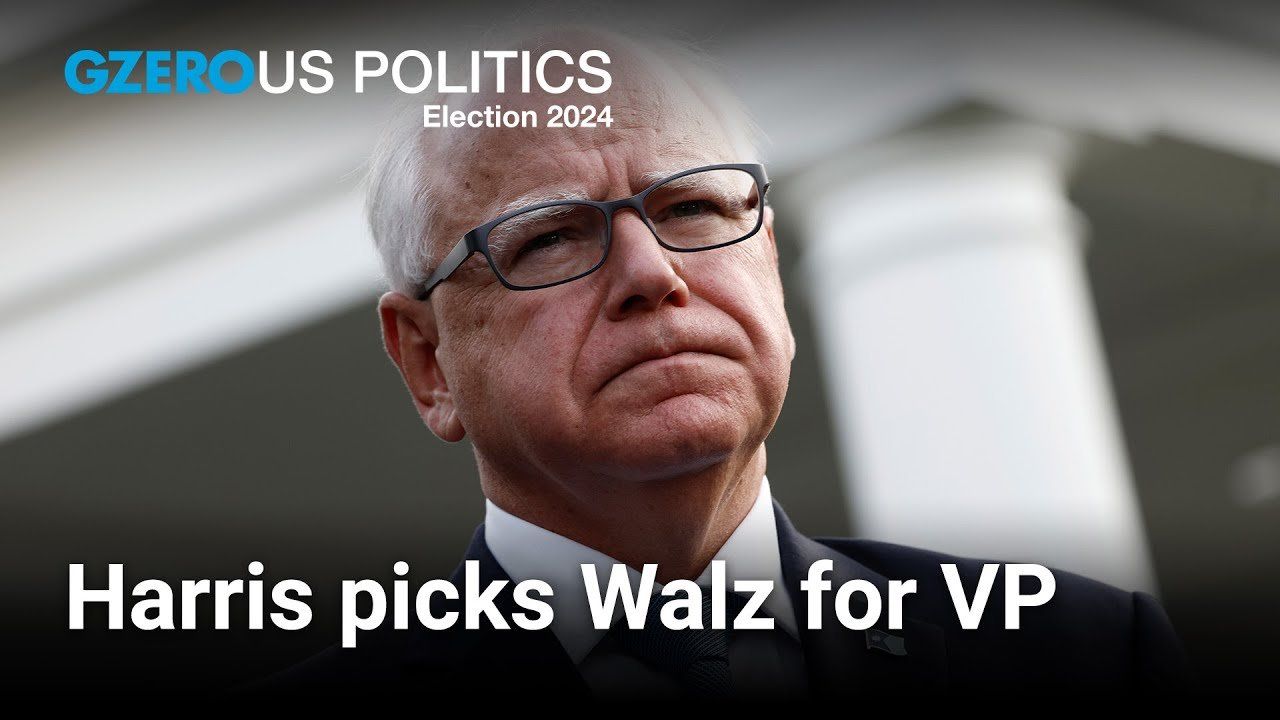
Jon Lieber, Eurasia Group's head of research and managing director for the firm's coverage of United States political and policy developments, shares his perspective on US politics from Washington, DC.
What we're watching in US Politics: Vice President Kamala Harris, the Democratic nominee for president, has chosen her running mate: Gov. Tim Walz of Minnesota.
Walz is a moderate to center-left Democrat who has presided over a trifecta in Minnesota, meaning the Democrats have controlled the state legislature for several years now. They have passed several “wins” for progressive policy, liberalizing the state's marijuana laws, expanding gun control, and expanding access to abortion. This has made Walz a popular choice with many progressives. He’s also been endorsed by several labor unions as a good pick for Kamala Harris. In reality, though, he probably doesn’t make that much of a difference in the presidential campaign.
Harris herself is running as, sort of, a generic Democrat. She’s been avoiding media interviews, running a lot of campaign ads, and giving a lot of set speeches where she can basically read off a teleprompter and carefully curate the image that she’s putting forward to the American people as the candidate in what’s actually going to be a truncated campaign of only about 100 days.
Walz probably helps her with that. He looks like a pretty nice guy. He delivers a lot of great attack lines on President Donald Trump that have Democrats excited, but the evidence suggests that vice presidential picks really don't make all that much of difference in presidential campaigns. Usually, it’s the person at the top of the ticket, and that person is Harris. She continues to benefit from a couple of great weeks after Biden stepped aside from the nomination, and this race is starting to look significantly more competitive than it did right after the disastrous debate for Biden.
A couple of interesting watch points coming up: One will be a potential debate between Walz and the significantly younger Republican VP candidate, Sen. JD Vance, and then whether or not Harris and Trump themselves will debate. Probably, Trump wants the debate to happen so that he can disrupt Harris’ momentum.
- Kamala Harris narrows the enthusiasm gap. But will it last? ›
- Will market turmoil melt Kamala Harris’s momentum? ›
- Kamala Harris on foreign policy ›
- Who will Harris pick as her VP running mate? ›
- Harris, Trump and the hypocrisy in US politics - GZERO Media ›
- Debate Bingo, VP edition: Tim Walz v. JD Vance - GZERO Media ›